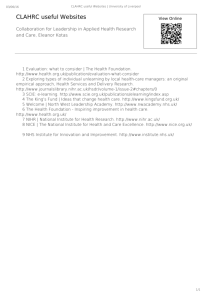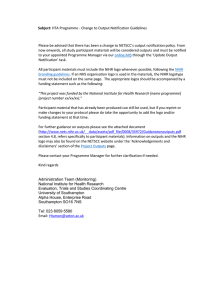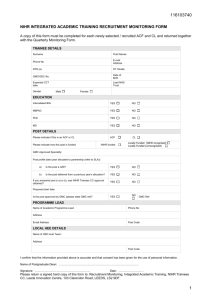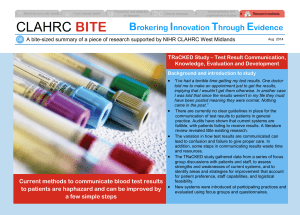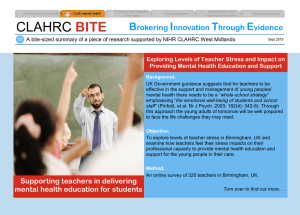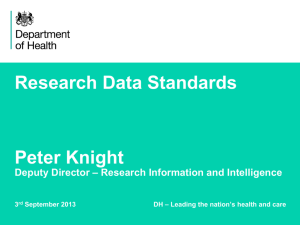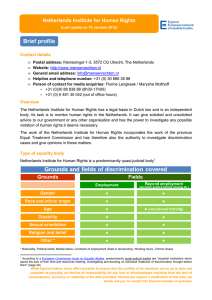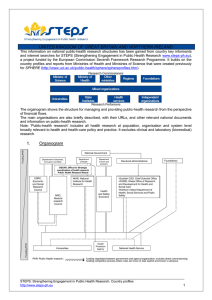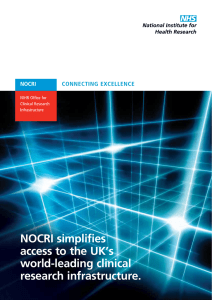Going the extra mile: Improving the nation’s health and wellbeing through
advertisement
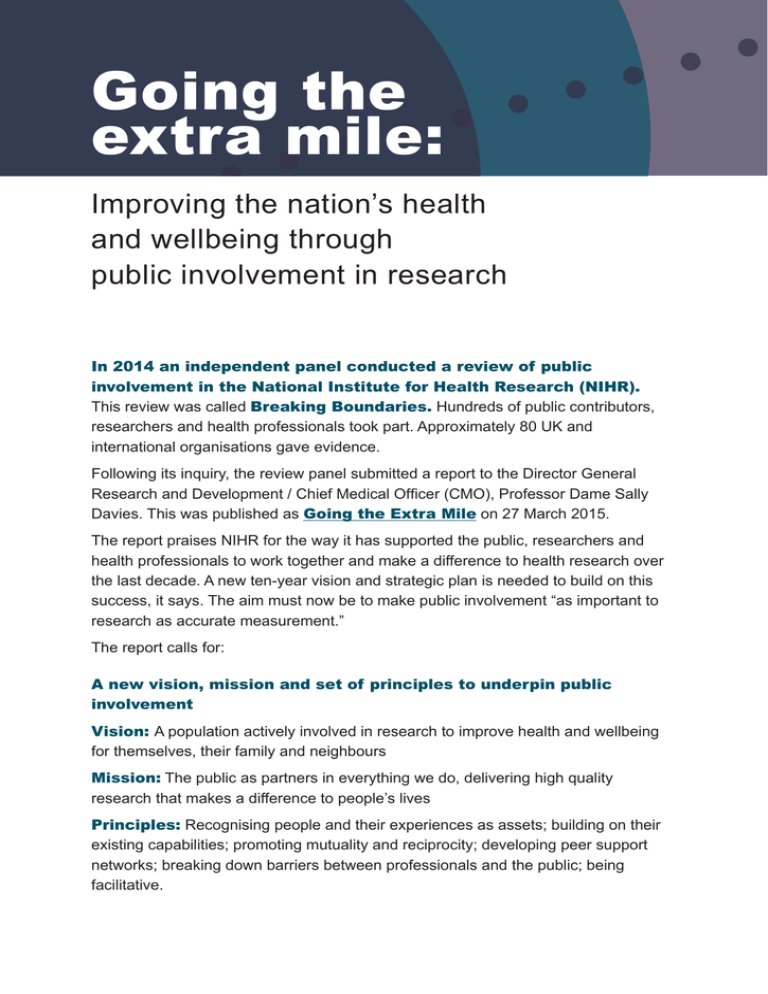
Going the extra mile: Improving the nation’s health and wellbeing through public involvement in research In 2014 an independent panel conducted a review of public involvement in the National Institute for Health Research (NIHR). This review was called Breaking Boundaries. Hundreds of public contributors, researchers and health professionals took part. Approximately 80 UK and international organisations gave evidence. Following its inquiry, the review panel submitted a report to the Director General Research and Development / Chief Medical Officer (CMO), Professor Dame Sally Davies. This was published as Going the Extra Mile on 27 March 2015. The report praises NIHR for the way it has supported the public, researchers and health professionals to work together and make a difference to health research over the last decade. A new ten-year vision and strategic plan is needed to build on this success, it says. The aim must now be to make public involvement “as important to research as accurate measurement.” The report calls for: new vision, mission and set of principles to underpin public A involvement Vision: A population actively involved in research to improve health and wellbeing for themselves, their family and neighbours Mission: The public as partners in everything we do, delivering high quality research that makes a difference to people’s lives Principles: Recognising people and their experiences as assets; building on their existing capabilities; promoting mutuality and reciprocity; developing peer support networks; breaking down barriers between professionals and the public; being facilitative. ublic involvement in the NIHR to be focused on six common P goals • Opportunities to be involved in research are visible and seized on by the public • It is standard practice for the public and professionals to work together • The experience of patients, service users and carers is valued • Public involvement is a required part of high quality research • Evidence of what works is easily available and can be put into practice • The NIHR has maintained its global presence and influence for working with the public comprehensive programme of work to empower and enable A the public to be part of what the NIHR does in the future including: • Making it easier for the public to ‘Get Involved!’ • Providing better public information and communication on research • Ensuring the public involvement community is more diverse and inclusive • Putting in place stronger leadership for public involvement across the NIHR • Establishing standards for public involvement so organisations can measure progress • Making more help and support available to public contributors and researchers • Encouraging local innovation and creativity in public involvement • Greater collaboration in public involvement including regional ‘patient voice’ forums Measuring success In future the NIHR should measure success in three main areas: Reach: the extent to which people and communities are engaged, participating and involved in research including the diversity of this population. Relevance: the extent to which public priorities for research are reflected in NIHR funding and activities. Refinement and improvement: Models and methods for ensuring public involvement is adding value to research excellence in the NIHR. A full copy of the report can be found at: http://bit.ly/1GBotl2 For further information contact: Simon Denegri NIHR National Director for Patients and the Public in Research Simon.Denegri@nihr.ac.uk

